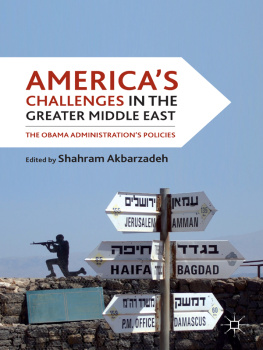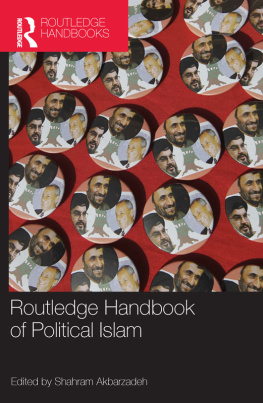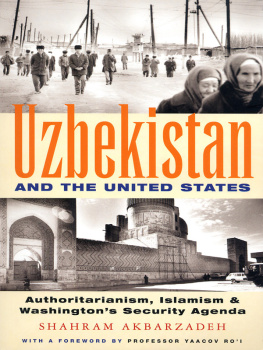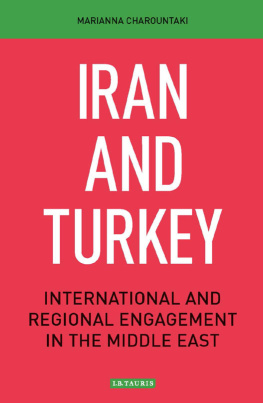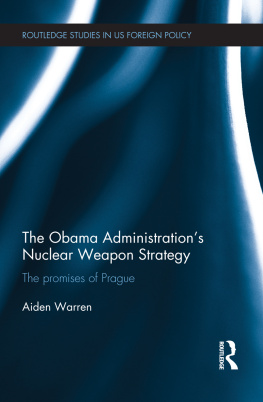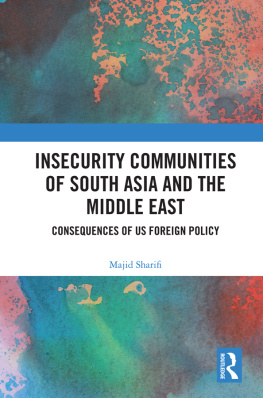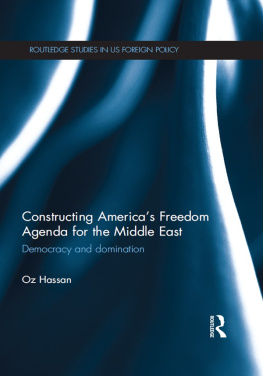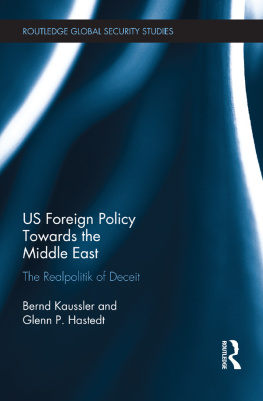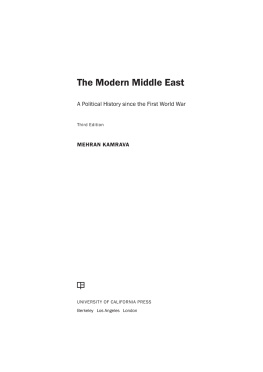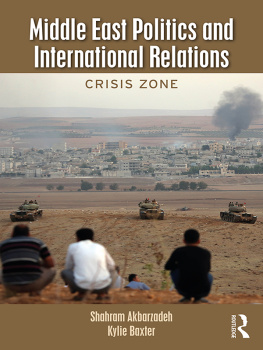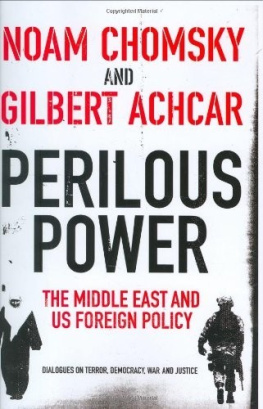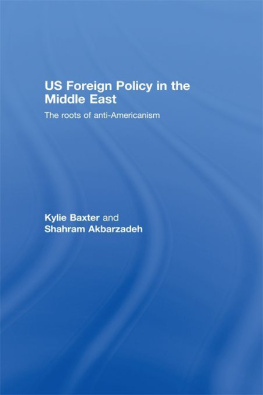AMERICAS CHALLENGES IN THE GREATER MIDDLE EAST
AMERICAS CHALLENGES
IN THE GREATER
MIDDLE EAST
THE OBAMA ADMINISTRATIONS
POLICIES
Edited by
Shahram Akbarzadeh


AMERICAS CHALLENGES IN THE GREATER MIDDLE EAST
Copyright Shahram Akbarzadeh, 2011.
All rights reserved.
First published in 2011 by
PALGRAVE MACMILLAN
in the United Statesa division of St. Martins Press LLC,
175 Fifth Avenue, New York, NY 10010.
Where this book is distributed in the UK, Europe and the rest of the world, this is by Palgrave Macmillan, a division of Macmillan Publishers Limited, registered in England, company number 785998, of Houndmills, Basingstoke, Hampshire RG21 6XS.
Palgrave Macmillan is the global academic imprint of the above companies and has companies and representatives throughout the world.
Palgrave and Macmillan are registered trademarks in the United States, the United Kingdom, Europe and other countries.
ISBN: 9780230112773
Library of Congress Cataloging-in-Publication Data
Americas challenges in the greater Middle East : the Obama Administrations policies / edited by Shahram Akbarzadeh.
p. cm.
ISBN 9780230112773 (hardback)
1. Middle EastForeign relationsUnited States. 2. United StatesForeign relationsMiddle East. I. Akbarzadeh, Shahram.
DS63.2.U5A823 2011
327.73056dc22 2011002899
A catalogue record of the book is available from the British Library.
Design by Newgen Imaging Systems (P) Ltd., Chennai, India.
First edition: July 2011
10 9 8 7 6 5 4 3 2 1
Printed in the United States of America.
ACKNOWLEDGMENTS
This project was made possible by the generous support of the Australian Research Council (DP0770266). Thanks are due to Gordon Willcock and Elizabeth Lakey for their assistance.
1
OBAMA IN THE MIDDLE EAST FAILURE TO BRING CHANGE
Shahram Akbarzadeh
President Barack Obama inherited an unenviable legacy from his predecessor in the greater Middle East. At the time of his inauguration, U.S. troops were involved in two theaters of war. The wars in Afghanistan and Iraq had started well and allowed the United States to gain quick victories against incumbent regimes. Securing these victories, however, had proven elusive. In Afghanistan, the Taliban had managed to put up resistance, seriously curtailing the authority of the central government beyond major centers of population. The Taliban also established camps across the border, using Pakistani territory to train fighters and launch attacks against U.S. troops and those of its allies. In Iraq, a pro-Saddam insurgency soon developed into an Islamist/Al Qaeda campaign of terror, aimed at punishing the United States and instigating a sectarian war between Sunni and Shia Iraqis.
In the protracted Israeli-Palestinian dispute, President Obama inherited a challenge that tested U.S. relations with Israel and the Arab world. For over 50 years, the question of Palestinian statehood has galvanized Muslim opinions and thrown the Middle East into turmoil. Successive Arab-Israeli wars have highlighted the centrality of the Palestinian plight to the political dynamics of the region and its propaganda value for antiestablishment political actors. The ongoing construction of Israeli settlements in the occupied territories, the status of Jerusalem, and the question of Palestinian refugees displaced after the 1949 and 1967 wars have hampered attempts at resolving the issue. Past U.S. administrations have made piecemeal progress toward the resolution of the Israeli-Palestinian dispute: the Oslo Accord, which led to the formation of the Palestinian Authority, may be counted as one such achievement. The subsequent unilateral withdrawal of Israel from the Gaza Strip in 2005 has also been credited to U.S. policy, although there is little evidence to support that. Nonetheless, the dream of a Palestinian state remains as distant as ever. Former U.S. president George W. Bush was publicly supportive of a future Palestinian state. But his comments on settlements as facts on the ground only emboldened Israel to continue with its settlement expansion policy. President Obama has proven unable to reverse this policy.
Farther to the east, and central to the ideological challenge to the United States, stands Iran. Accused of running a clandestine nuclear weapons program and sponsoring international terrorism (justified most notably in relation to its links with the Hizbullah militia in Lebanon), Iran has proven too difficult to handle by successive administrations. The Bush response to Irandescribing it as part of an axis of evil and suggesting that it may be next on the U.S. hit listdid nothing to address entrenched animosities. Furthermore, U.S. action in the neighborhood only served to advance Irans strategic interests. The removal of the Taliban and the Saddam regimes, both of which had been hostile toward Iran and their own Shia population, was a major factor in opening up the region to Irans strategic reach. But this strategic leeway was delivered in a mixed package that also included an immediate threat. The stationing of U.S. troops on both sides of the Islamic Republic of Iran fueled paranoia in Tehran regarding U.S. plans for a regime change. The consequent shift toward conservatism in Iran and the ascendance of the hard-line faction at the expense of President Khatamis reformism reflected this mix of paranoia and nationalist assertiveness. President Obamas message of change and gestures of goodwill have had no impact on deep-seated fears and vested interest in Iran.
The United States has suffered from a serious decline in credibility and respect in the Middle East. The history of U.S. involvement in the Middle East in the latter part of the twentieth century and most poignantly during the George W. Bush era has tarnished the American image. The notion that the United States is anti-Islamic appears quite compelling to many in the region. The war on terror and many antiterror laws are seen as targeting Muslims and their faith. The 2008 annual survey of public opinion in six Arab states (Egypt, Jordan, Lebanon, Morocco, Saudi Arabia, and the United Arab Emirates [UAE]), involving more than 4,000 respondents, revealed the depth of this skepticism. It found that 83 percent of the sample It was in the midst of this crisis of respect that Barack Obama took up the helm.
President Obamas guiding principle in the Middle East and more broadly in foreign policymaking has been to differentiate his administration from that of his predecessor and address the image deficit. The new administration and the new team of advisers felt that the decline in the U.S. standing had reached a critical point at which even established Muslim allies like Turkey, Saudi Arabia, and Egypt were reticent in supporting Washington. This was evident in their response to the U.S. invasion of Iraq in 2003. Although the leadership may have been privately happy to see Saddam Hussein removed from power, they could not publicly endorse U.S. actions for fear of a popular backlash. This was a significant shift from 1991, when the United States managed to form a willing international coalition in response to Iraqs invasion of Kuwait. The Obama administration set out to restore Washingtons moral standing and leadership. Achieving this was a tall order, and the new president must have been acutely aware of the magnitude of the challenge.
Obamas position on the wars in Afghanistan and Iraq was clear during his electoral campaign. He had differentiated between the two as a war of necessity and a war of choice. This distinction was generally shared by the international community but not by the Muslim world. Many observers had lamented the diversion of resources from Afghanistan to Iraq before the United States had managed to secure its victory, root out the Taliban, and capture Osama bin Laden.
Next page
